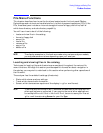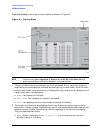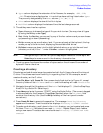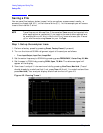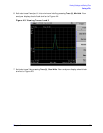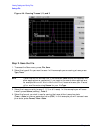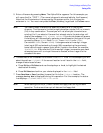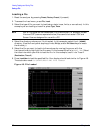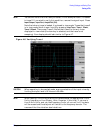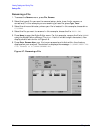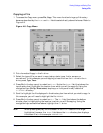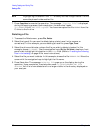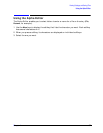
Chapter 4 51
Viewing Catalogs and Saving Files
Saving a File
5. Enter a filename by pressing Name. The Alpha Editor appears. For this example you
will name the file, “TEST1”. (The numeric keypad is also available for the filename.)
Note that the file extension is always set by the system and for this file type the
extension is TRC. You must now press the
Enter (hardkey) to get back to the Save menu.
NOTE You need to use a filename that does not already exist in the current
directory. The filename is limited to eight characters, alpha (A-Z) or numeric
(0-9) in any combination. The analyzer will not allow you to overwrite an
existing file. If you select a filename that already exists, the status bar will
display the message: File already exists. If you do not choose a filename,
the analyzer will automatically generate a name based on the type of file you
are saving (Setup: SETUP, State: STATE, Trace: TRACE, Limits: LIMIT,
Corrections: COREC, Screen: SCREN). It also generates a three digit integer
(starting at 000 and extending through 999, remembering the previously
saved value through a power cycle) which it adds to the name, for example:
TRACE056.TRC. Also note that this three digit integer increments upon each
attempted save until a unique filename is created, without regard to the
success of the save.
6. The destination for the saved file is shown in the Path: field. In this example, you will
select the path as C:\START\. If the correct location is not listed in the Path: field,
change directories as follows:
a. Press
Dir Up or Dir Select and use the step keys or knob, to highlight the desired
destination directory.
b. Press Dir Select and confirm your choice displayed in the Path: field.
7. Press
Save Now or Save (hardkey) to save the file to the C:\Start\ location. The
message Saving Now is displayed during this operation. For this example, the status
line displays: C:\START\TEST1.TRC file saved.
NOTE When saving to drive (A:), never remove the floppy disk during the save
operation. To do so could corrupt all data on the floppy disk.





